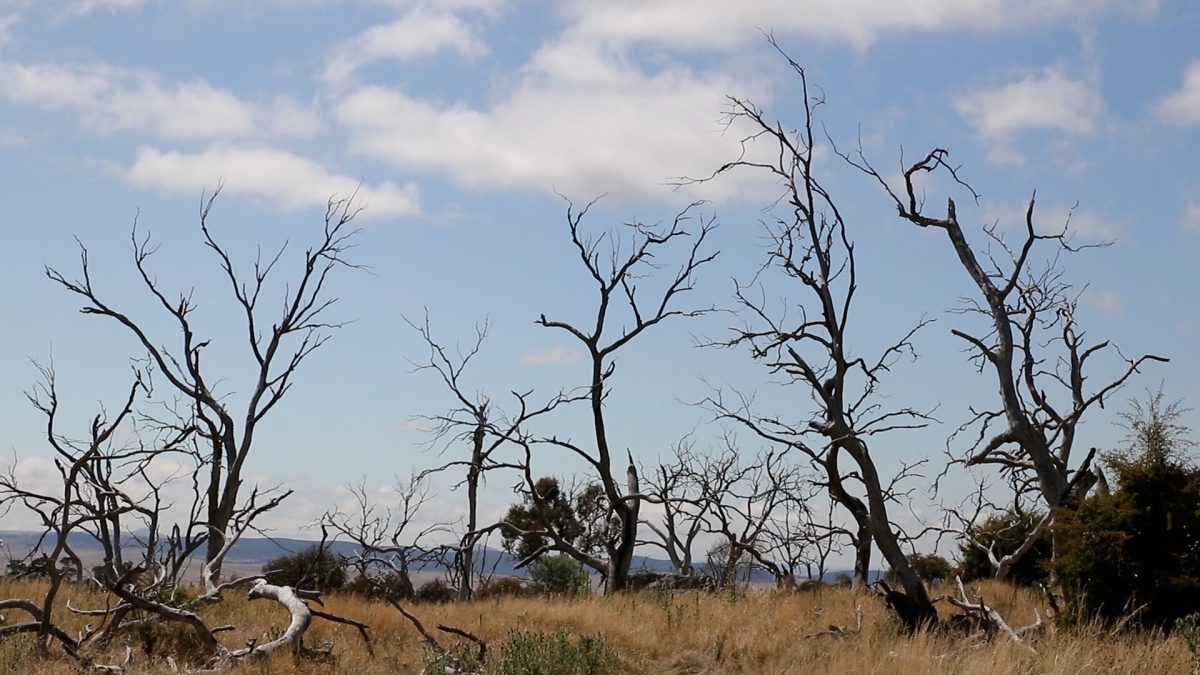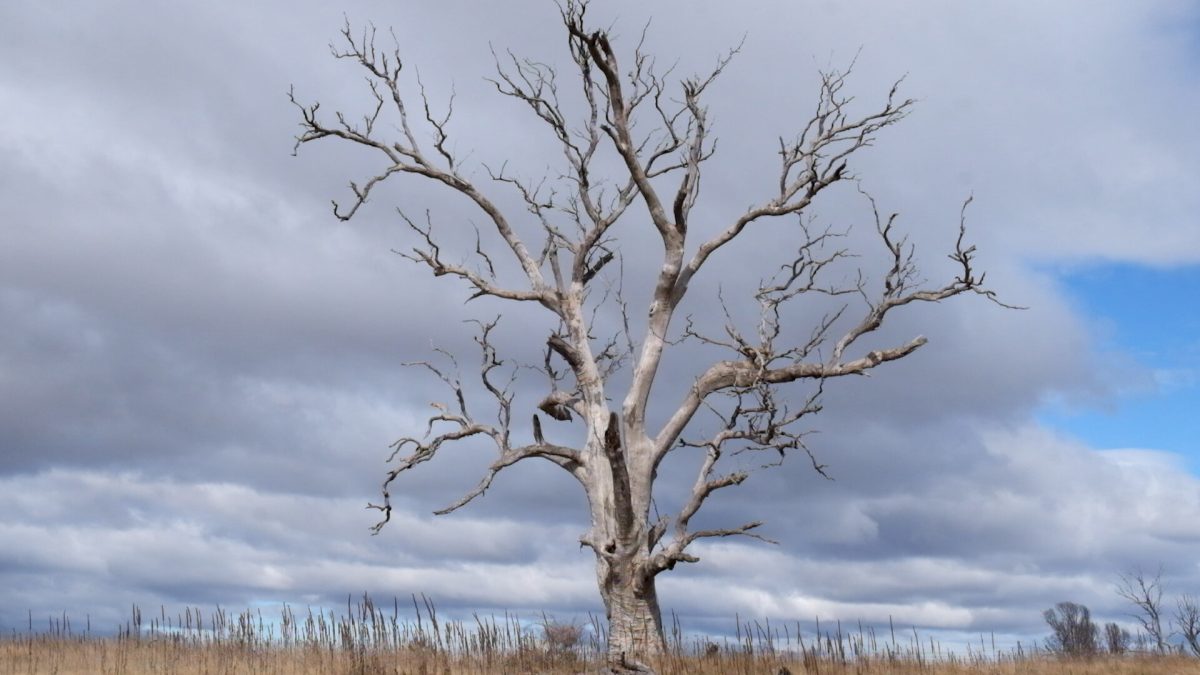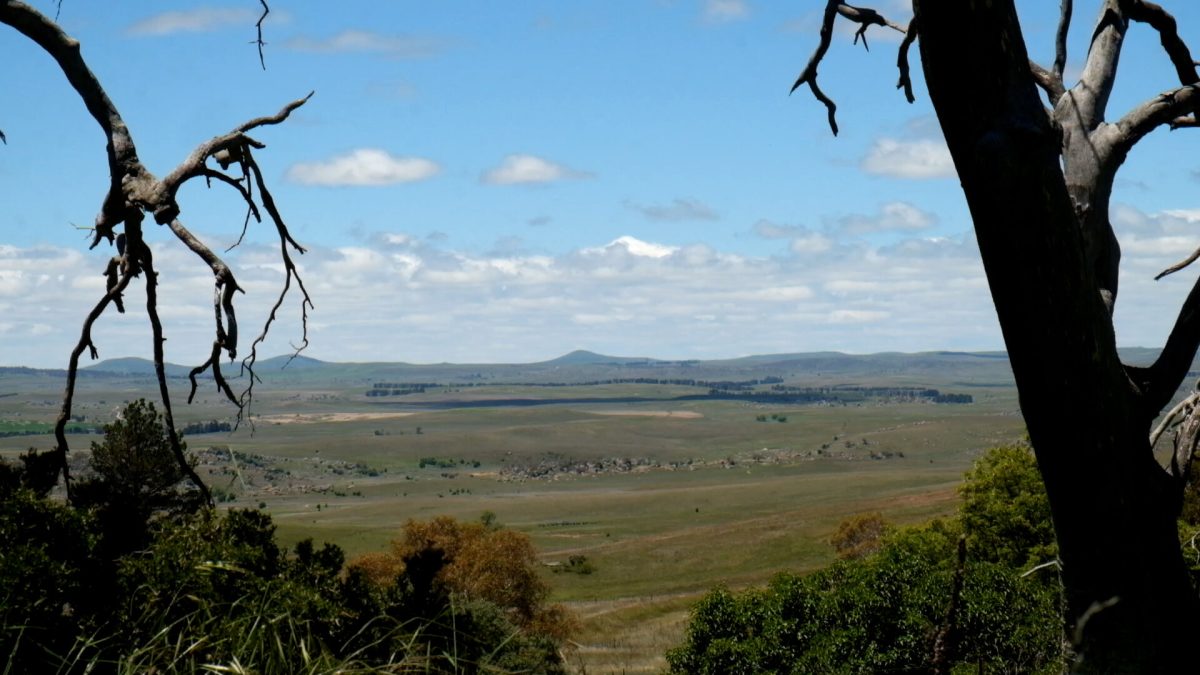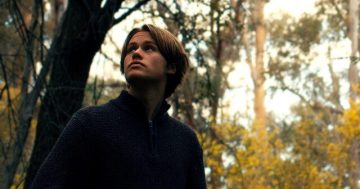
Travelling through the Monaro region, many pass the stands of silent, skeletal trees. They are the subject of a documentary, Manna. Photo: Supplied.
The extent of tree dieback in the Monaro grassy woodlands and the fact no one was talking about it prompted a Cooma filmmaker to make a documentary about it. The film Manna is a finalist in the Far South Film Festival.
Magdalene Shatrov grew up on a farm just outside Cooma. She went to Canberra to study and work for a few years and returned to Cooma a year ago.
While studying film production at university, she discovered a love of documentaries and keen interest in environmental management.
In 2019 Ms Shatrov was finishing work on a film at university that was set on the lower side of the Snowy River. A friend mentioned the tree dieback at Berridale and suggested writing about it.
“I was very interested in the fact that this story wasn’t being told,” she said. “To me, this Monaro dieback sounded like a really big thing.”
Yet the farm where she grew up was opposite an area where ribbon gums were dying. As a youngster she had thought it was normal.
She was aware that an honours student at ANU was doing research to confirm the causes of the dieback and later learnt about a Landcare restoration project. Other than that, there was silence.
“Some people were very aware of it but in the wider consciousness of the area and among the many people travelling through, it wasn’t being seen or talked about,” she said. “This environmental degradation happens very slowly and silently. That was one of the biggest pushes to me.”

What once was living, breathing woodland now stands with only the hollow wind to pass across the branches of dead trees. Photo: Supplied.
She began brainstorming themes for the documentary with a friend, Dante Calvijo, a composer.
From there it came together very slowly as it was just Ms Shatrov running around doing it. That included sourcing funding.
She met the ANU graduate doing the dieback research, but it was too complex a project for a single honours student.
The graduate’s supervisor, Chris Brack, mentioned Upper Snowy Landcare’s project at Berridale.
“That was my introduction to the work of Landcare in this field and suddenly I had a new story to tell,” she said. “Instead of interviewing people about the research, I could also interview people about a regeneration project that is trying to find new ways to plant trees and regenerate the land.”
From those interviews Ms Shatrov learnt that the dieback is caused by a complex combination of land degradation and climate change.
The way the land has been managed has led to the loss of ecological complexity. Meanwhile the trees are experiencing higher levels of stress due to higher temperatures and less rainfall.
“Because of the land and ecological degradation as a whole, the trees are less resilient so less able to deal with environmental stresses,” she said. “There are so many factors.”
They include invasive species and tree clearing. Fewer trees mean higher temperatures.

The documentary Manna is a discussion on the Monaro grassy woodland ecosystem. Photo: Supplied.
The destruction of tree canopy by a type of weevil shows the consequences of the loss of biodiversity and food webs becoming simpler.
The research is incomplete on why the weevils are destroying the trees, but it is possible there is an imbalance in the insect population due to changing temperatures and reduced biodiversity.
“If you remove the trees, there are less birds and so less predators of the insects. That is just one example,” Ms Shatrov said.
She hopes the documentary will show that our landscapes are extremely complex and interconnected and need well-thought-out care.
“If you see a dead tree, it has happened for a reason. That tree is connected to so many other living things and part of a living complex system.”
An unexpected outcome of the documentary is that Ms Shatrov was so impressed by the Upper Snowy Landcare group of volunteers when she interviewed them, that she joined them.
After she completed the visual aspects of the 20-minute documentary, Mr Calvijo put music to it and did the sound editing.
Manna will screen at the Far South Film Festival at The Twyford in Merimbula on 16 August at 10 am.








